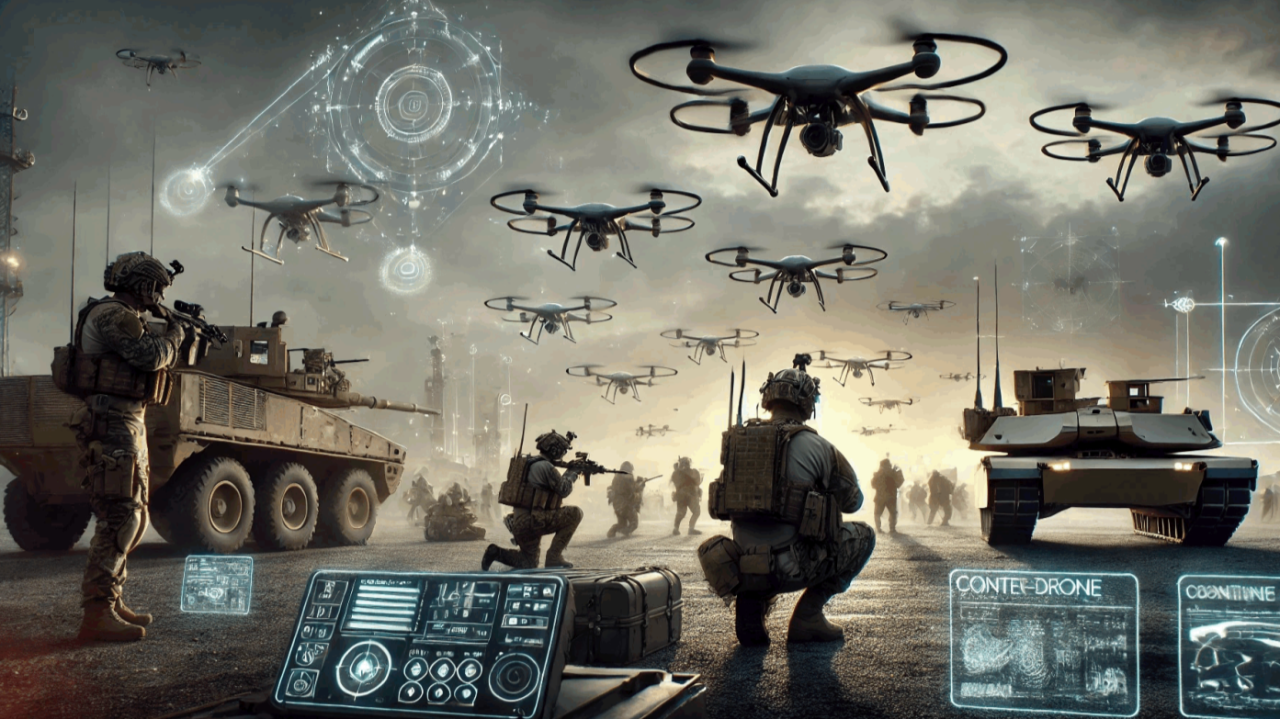
Changing Geometries of Battlefield: From WWI to the Present
Why in News?
Ukraine’s Operation Spider Web, which involved the use of 150+ quadcopter drones launched from shipping containers, brought down Russian strategic bombers and marked a paradigm shift in modern warfare. Analysts argue that this signals a technological leap akin to major shifts during World Wars, fundamentally changing the geometry of the battlefield.
This topic is of vital importance for CLAT Current Affairs 2026, integrating insights on history, military ethics, legal frameworks around modern warfare, and the impact of technological transformation on international security law.
Introduction
The article chronicles the evolution of battlefield strategies — from the trench warfare and machine guns of World War I to AI-powered drone attacks in Ukraine. It explores how each military innovation not only reshaped war tactics but also redefined legal, ethical, and strategic considerations across generations.
Point-wise Summary
- Operation Spider Web: The New Age of War
- Ukraine’s drone-led assault bypassed conventional air raids.
- Quadcopter drones were deployed covertly using shipping containers.
- The attack caused significant Russian losses, showcasing a low-cost, high-impact warfare model.
- Machine Guns in World War I: The Original Game Changer
- Machine guns, introduced in the late 19th century, revolutionized warfare.
- A single gun could replace hundreds of soldiers in defensive capability.
- Resulted in stalemates on the Western Front and massive casualties.
- Example: French casualties at Verdun exceeded 300,000 in early 1916.
- Blitzkrieg in WWII: Speed Over Strength
- Nazis bypassed France’s Maginot Line using Blitzkrieg tactics (lightning-fast warfare).
- Germany combined Panzer tank divisions, Luftwaffe support, and mobile infantry.
- France collapsed in under a month despite years of fortified defence planning.
- Missile and Ballistic Warfare
- Germans also developed the V-2 missile during WWII — the first true ballistic missile.
- This marked a transition to long-range, impersonal warfare.
- Modern warfare has extended beyond visible targets into strategic, long-distance strikes.
- The Era of Drones: Precision and Psychological Impact
- Drones are now used in urban combat, surveillance, and strike operations.
- Provide asymmetrical advantage — low investment, high damage.
- Used effectively in Ukraine, Gaza, Azerbaijan-Armenia conflict.
- Symbolize a democratization of warfare technology, even for smaller nations.
Key Legal & Military Terms (CLAT-Oriented Notes)
Term | Explanation |
Operation Spider Web | Ukrainian military mission using drones to neutralize high-value Russian air assets. |
Geometry of Battlefield | Strategic design and arrangement of military operations — location, terrain use, force movement. |
Quadcopter Drone | Small, low-cost, remote-controlled flying machine used for reconnaissance or attack. |
Machine Gun Warfare | Use of automatic rifles in static defense; revolutionized WWI. |
Blitzkrieg | German for “lightning war”; rapid and coordinated attack using mobile troops and air power. |
Ballistic Missile | A missile that follows a ballistic trajectory over a long range. Introduced in WWII by Germany. |
Stalemate | A situation in war where neither side can gain advantage; common in WWI trench warfare. |
Attrition Warfare | Strategy of wearing down the enemy over time through sustained losses. |
Urban Combat | Warfare in densely populated areas involving civilians and complex terrain. |
Insights for CLAT 2026 Aspirants
Academic Relevance
- Useful for Legal Reasoning questions involving technology and ethics in warfare.
- Provides historical context for questions on military law, international treaties, and wartime conduct.
Legal Interfaces
- Raises questions under International Humanitarian Law (IHL):
- Can drones be used without formal declarations of war?
- How should civilian harm be addressed in drone warfare?
- Challenges existing norms under:
- Geneva Conventions
- UN Charter Articles 2(4) and 51 (Use of Force and Self-Defense)
- Customary International Law
Key Lessons from Warfare Evolution
Period | Key Technological Shift | Impact |
WWI | Machine guns | Stalemates, high casualties |
WWII | Blitzkrieg & ballistic missiles | Fast victories, strategic long-range attacks |
Cold War | Nuclear deterrence | Focus on MAD (Mutually Assured Destruction) |
21st Century | Drone warfare | Low-cost, high-precision, asymmetrical strategy |
Comparative Insight for Legal Essays / Interviews
Topic: “Is modern drone warfare ethical under existing international law?”
- Draw parallels with:
- WWI machine gun misuse
- WWII Blitzkrieg legality
- Targeted killing debates (e.g., Osama bin Laden, Qasem Soleimani)
- Use this case to argue both legality and ethical dilemmas.
Conclusion
From trench warfare to drones launched from shipping containers, the changing geometries of the battlefield reflect a broader evolution of not just technology, but of law, ethics, and geopolitics. Operation Spider Web demonstrates how asymmetric, tech-enabled warfare is becoming the norm.
For CLAT aspirants, this article offers insight into:
- Legal frameworks in military conflict,
- Historical progression in warfare,
- And how strategic thought and legal safeguards must evolve together.




